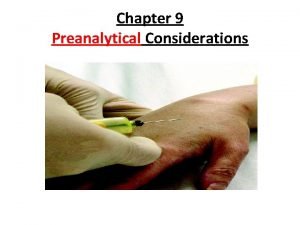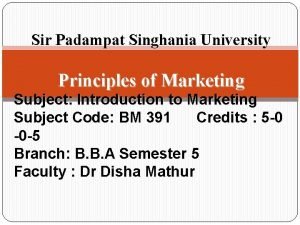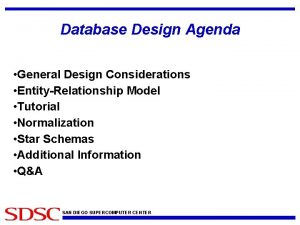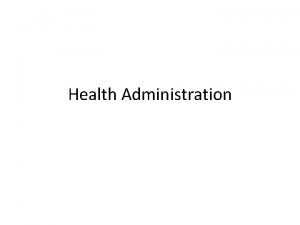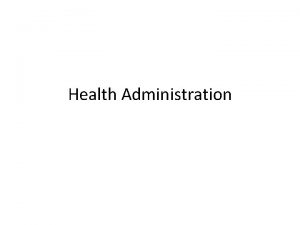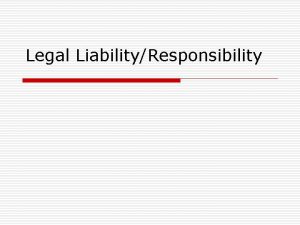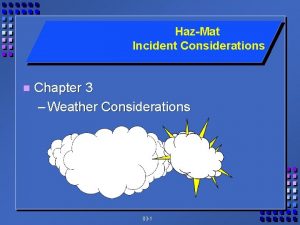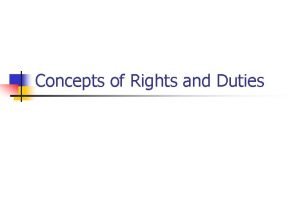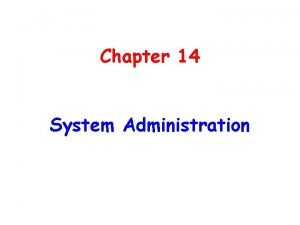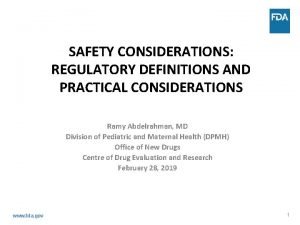Chapter 2 Legal Considerations and Administration Legal Concepts




















- Slides: 20

Chapter 2 Legal Considerations and Administration

Legal Concepts • Risk management • Negligence – – – Malfeasance Misfeasance Nonfeasance Gross negligence Malpractice • Standards of care 2

Record Keeping • Valuable tool in the prevention and rehabilitation of further athletic injuries • Records provide important information regarding an athlete’s treatment in the event of injury. – PPE and emergency consent forms • Necessary to protect yourself, the team, and institution from legal action in the event of an injury 3

Record Keeping • Assumption of Risk – An individual takes the responsibility for the danger taken while participating in the sport • Special Instructions – Instructions that may affect the athlete’s health – Based on the information obtained from the physical exam 4

Team Ethics • Ethics – Morals; principles of right, wrong, and duty that guide our behavior – Some actions can be unethical but still be legal, and vice versa. – Coach sets the tone for athletes, parents, and crowd – Teams work better when they share same ethics. 5

Team Ethics • • • The Team Physician The Athletic Trainer The Coach The Athlete’s Parents/Guardians The Administration 6

Expected Conduct for Sports Medicine Professionals and Athletes • Written guidelines or regulations ensure that both athletes and the sports medicine team fully understand share expectations of conduct. • National Athletic Trainers’ Association Code of Conduct • Sample District Athletic Philosophy and Regulations 7

Sample School District Athletic Philosophy and Regulations • • Philosophy Code of Ethics Athletic Regulations Training Rules and Standards • Scholastic Eligibility • Citizenship • Team Tryouts • • • Dismissal from a Team Quitting a Team Travel Regulations Outside Competition Participation in Other School Activities 8

Responses to Breaches of Ethical and Regulatory Codes • It is important to enforce existing ethical and regulatory codes. • Report any instances in which codes are violated. • Notify the appropriate person if athlete or team member is observed putting mental or physical well-being in danger • Report all breaches of conduct. 9

Legal Responsibilities • Tort - wrongful act resulting in injury to another’s person, property, or reputation, for which the injured party is entitled to seek compensation • Battery- an example of an act of commission; involves hitting a player or inappropriately touching an athlete 10

Legal Responsibilities • Examine the mechanism of injury and circumstances surrounding it. – Determine preventable vs. unpreventable injuries. – A lawsuit (litigation) determines liability. – Financial compensation may be awarded to the injured party. 11

Legal Responsibilities • A member of the sports medicine team who causes additional injury to an athlete is liable for that aspect of the injury. • The majority of sports medicine lawsuits involve claims of negligence. – Avoid issues of “failure to warn. ” • Specific laws vary from state to state. 12

Legal Responsibilities • Malpractice Insurance – Most employers carry liability insurance on employees who are working for them. • When working outside the scope of that job, a person should carry additional liability insurance. • S. A. F. E. – Supervision, Aid, Facilities, Equipment 13

The Rights of the Patient • Patient’s Bill of Rights • Health Insurance Portability and Accountability Act (HIPAA) • Family Educational Rights and Privacy Act (FERPA) 14

Risk Management in Sports • Do not allow a patient, client or athlete to begin any program without obtaining a signed informed consent and liability release. • Agree upon fees/costs and put them in writing before the start of services. • Make sure adequate facilities are available for both male and female athletes. 15

Risk Management in Sports • All efforts should be made not to be alone in a room with an athlete or patient to avoid the suggestion of inappropriate behavior. • Keep detailed notes about all professional activities. • Become familiar with the products and supplies used. Read all manufacturer warnings and disclaimers, and make sure the athletes or patients are aware of them. 16

Risk Management in Sports • Develop an emergency action plan for every sport. • Consider all the sports involved in the athletic program, not just the ones that are conducted on a court or field, when developing emergency action plans. • Follow appropriate procedures on all injury assessments. 17

Risk Management in Sports • Ensure supervision of all athletes during treatment modalities, whether in the clinic or on the sidelines, and make sure those performing the treatment modalities are aware of any health conditions the athlete may have, such as diabetes or asthma. • Educate the coaches regarding up-to-date training techniques. 18

Risk Management in Sports • Conduct pre- and post-season reviews of past years and seasons, and learn from both the positive and negative events that occurred. • Create a daily approach to safety. Make a daily checklist for key items of concern. • Create a safety committee. • Know personal limitations. 19

Risk Management in Sports • Be aware of changes in standards of care and any other changes that affect your field of work. 20
 Intravenous medication administration pretest
Intravenous medication administration pretest Intravenous medication administration pretest
Intravenous medication administration pretest Concepts of medication administration posttest
Concepts of medication administration posttest Pill identifier
Pill identifier Preanalytical considerations phlebotomy
Preanalytical considerations phlebotomy Writing strategies and ethical considerations
Writing strategies and ethical considerations Experimental design and ethical considerations
Experimental design and ethical considerations Pricing considerations and approaches
Pricing considerations and approaches General consideration in machine design
General consideration in machine design Tax considerations for setting up a new business
Tax considerations for setting up a new business Emv kiosk considerations
Emv kiosk considerations Exchange transaction and relationship in marketing
Exchange transaction and relationship in marketing Mechanical design of transmission line
Mechanical design of transmission line Database design considerations
Database design considerations Compare and contrast first and second language acquisition
Compare and contrast first and second language acquisition Cloud delivery model considerations
Cloud delivery model considerations Bioreactor considerations for animal cell culture
Bioreactor considerations for animal cell culture Collaboration design considerations
Collaboration design considerations Conservation of tooth structure
Conservation of tooth structure Antecubial region
Antecubial region Biopharmaceutic considerations in drug product design
Biopharmaceutic considerations in drug product design




